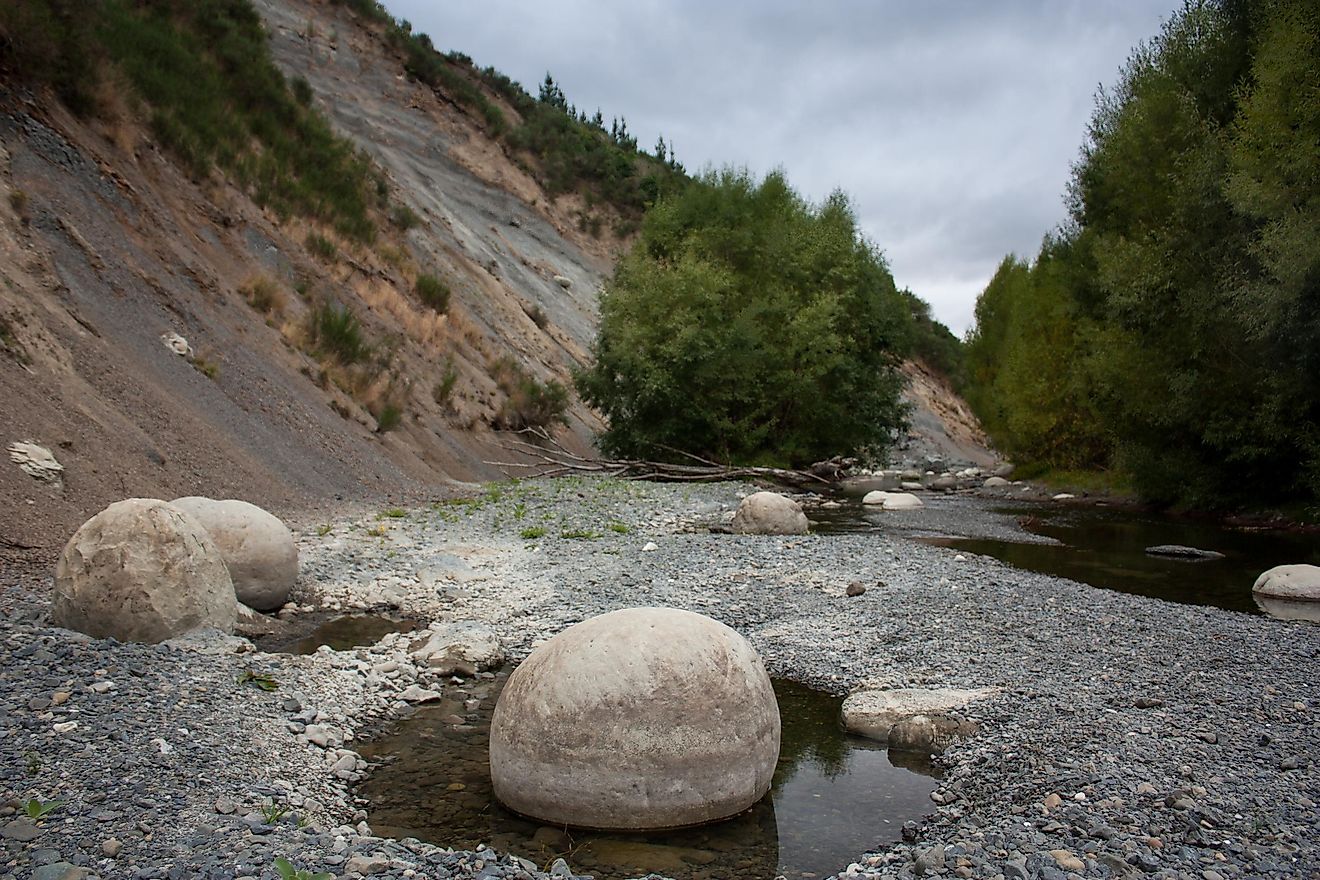What Is A Concretion?

Often mistaken for bones, turtle shells, or fossil eggs, concretions are geological features found in sedimentary rock and soil. A concretion is a hard mass that forms when rock minerals precipitate in cracks or cavities, or through the build-up of sediment. These mineral masses are common in types of sedimentary rock, such as sandstone, which is made up of compacted grains of sand, limestone, which is composed of calcium carbonate, shale, which is composed of compressed mud, and siltstone, which is composed of fine-grained silt. These geologic formations are often oval in shape, but can also occur in irregular shapes. The term concretion is derived from the Latin words con, which means "together," and crescere, which means to "grow."
Formation and Appearance
Given their varied shapes, sizes, and compositions, concretions are often assumed to be dinosaur eggs, plant or animal fossils, or human artifacts. However, concretions are usually formed after sediment is buried but before it undergoes a physical change and becomes rock, which is a process called diagenesis. Concretions form when minerals precipitate and cement sediment around a nucleus, which is usually organic, such as a piece of shell, tooth, or leaf. Given that they contain organic matter, fossil collectors often break concretions open in search of interesting fossil specimens. Some unusual concretion nuclei, especially those found in coastal salt marshes in England, contain items from the Second World War, such as shrapnel, bombs, and military shells.
Concretions vary in shape, size, and hardness, ranging from very small objects that cannot be seen without a magnifying glass to huge bodies that are up to 3 m in diameter. Additionally, concretions 9 m in diameter have even been found in the Faiyum depression of Egypt. Most concretions are similar in color to the rock in which they are found. Common shapes of concretions include disks, spheres, tubes, or grape-like.
Composition
Concretions usually contain carbonate minerals such as calcite or iron oxide. However, others are composed of minerals like marcasite, dolomite, siderite, ankerite, pyrite, gypsum, and barite. A concretion contains one dominant mineral and several other minerals depending on the environmental conditions in which they are formed. For example, a carbonate concretion that is formed due to the reduction of sulfates by bacteria also has minor portions of pyrites, while another formed by the microbial reduction of sulfate may contain mixtures of barite, calcite, and pyrite.
Types of Concretions
Septarian Concretion
A septarian concretion is a type of concretion that contains angular cracks called "septaria." These cracks vary in shape, volume, and shrinkage. It is unclear what creates the septaria, but several mechanisms have been proposed, including the expansion of gases produced by decaying organic matter.
Cannonball Concretion
A cannonball concretion is a large spherical concretion that resembles a cannonball. This type of concretion can reach 3 m in diameter, and is often found along the Cannonball River in the US state of North Dakota. A cannonball concretion is formed by the early cementation of silt and sand by calcite.
Elongate Concretion
An elongate concretion forms parallel to sedimentary strata and has been studied extensively since it provides information on the orientation of fluid flow in the host rock.
Other common types of concretions include hiatus concretions, Moqui Marbles, Kansas pop rocks, and calcium carbonate disc concretions.











